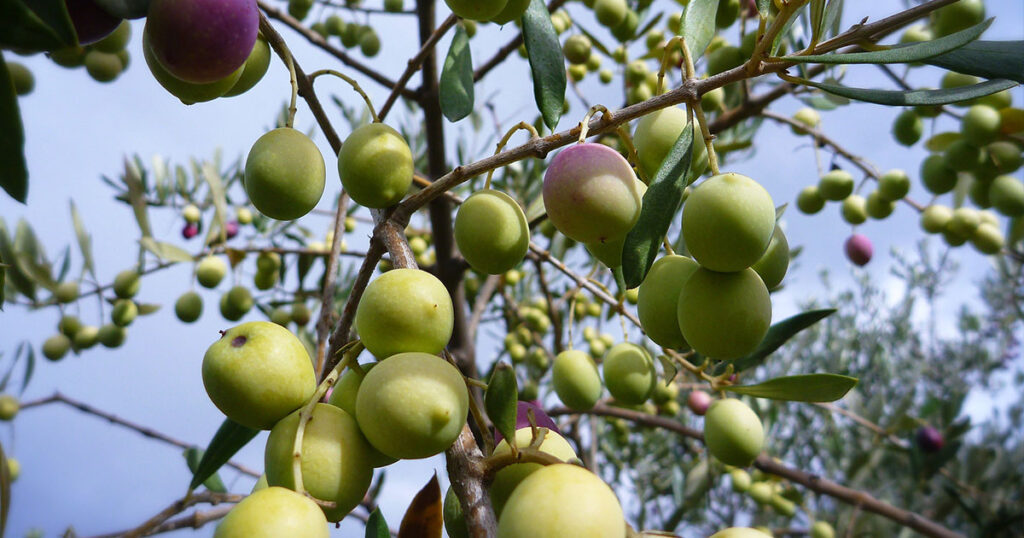
One of the benefits of living in Spain is plentiful and cheap olive oil. You’d have to be ignorant or crazy not to avail yourself of it. But this winter, for the first time in more than 25 years, it wasn’t olive oil I poured into the pan to fry onions and green peppers for pisto, a zucchini, pepper, and tomato dish I regularly prepare. The price of olive oil had risen so absurdly that to continue buying it felt like bowing to highway robbery. In silent protest, I had bought sunflower oil instead of olive on my last trip to the store, and that was what I used that day. But I did not feel triumphant. I can’t believe I’m doing this, I thought, staring into the pan. The color was not the green-gold that I was accustomed to, but pale, barely tinted. At one and a half euros a liter, though, this substitute was cheap, dirt cheap, compared to the 10 euros per liter that olive oil was going for. I should have been glad of an alternative. Instead, I was conflicted. I hoped that tasting the finished dish would relieve my doubts—either turn me back to olive oil or, if my palate couldn’t tell the difference, as I thought possible, allow me to gladly embrace the substitute.
Before moving to Spain, I had never cooked with olive oil and so it wasn’t taste that made me buy it. It wasn’t the touted health benefits either, because though health and happiness were twin pillars of a good life, my health was a given, and I took it for granted. Any efforts I made for my well-being were all on the side of happiness, which I believed could be enhanced or lost. If I’d been aware of what olive oil cost in the States, I’d have felt compelled to take advantage of such a deal. But I had never even glanced at olive oil in the stores back home—it wasn’t part of my culinary culture—so my using it was not motivated, either, by suddenly being able to buy something that had hitherto been out of my price range. Instead, I bought it because everyone else did. Even without making a study of cooking habits, the preponderance of olive oil on the grocery store shelves made it clear what the Spanish used. And why not when it was so cheap? Twenty years ago, a liter of extra virgin olive oil went for three euros. If you bought it in three-liter jugs, it was even cheaper.
I used olive oil for all my cooking, but didn’t use nearly as much as Spanish cooks because I sautéed rather than deep fried. Even to fry an egg, the Spanish use a half inch of oil in the pan because an egg is not flipped to cook the top but basted in abundant sizzling oil. Potatoes for the ubiquitous tortilla de patata, Spanish omelet, are fried in olive oil. Everything is. In Andalucía a few years ago, the members of a family I met laughed when I told them that the five-liter jug I was taking home to Asturias would last me half a year. They used 100 liters a year.
Do they still? Four years ago, a three-liter jug of extra virgin olive oil cost 15 euros. That was a big increase from the price of a few years earlier, but nothing compared to what was to come. From one purchase to the next, six months later, the price had jumped. Then it jumped again. The war, the drought, the middleman—all contributed to the escalating price. Everything was going up. But nothing went up as fast and far as olive oil. It was shocking.
You’d expect the surprise to wear off as you become accustomed to the new norm. And it did as far as gasoline and electricity and milk and coffee and rice are concerned, all of which had skyrocketed in cost. But for olive oil, no new norm existed because the price was a new high every time I shopped. Seven euros a liter, over eight, more than nine! I quit buying those pricy jugs, and soon, I told myself, I would quit buying altogether. Meanwhile, the price of tinned anchovies, tuna, and sardines—all of them packed in olive oil—also rose.
Olive oil or sunflower, coffee or decaf, cookies or cake—no choice I made was likely to affect my well-being in the long term. I operate as my stepfather did with investments: on a small scale. His smart choices for stock purchases had almost no effect on his wallet. Neither, though, did his bad choices. All he did with his careful studying of the market was fill up his time as one year slid into the next. I could do worse than he did, his worry about the future only a low background hum. But I could also do better and figure that even at 10 euros a liter—even at 15—I can’t go too far wrong. Olive oil versus sunflower might matter to my health or my budget, but not enough to notice.
All around me, my fellows are buying less olive oil, and, according to human nature, lamenting the price. But the warehouses are not suffering a backup. To the contrary, new markets have opened up, which is the problem. The product goes out, gets sold, and is consumed. As is true for other consumers, small adjustments allow me to carry on. So it’s settled: when the bottle of sunflower oil is used up, I’ll go back to my old standard. But not because of the taste difference. Pisto is an embarrassment of riches—onion, zuke, peppers, paprika both sweet and hot, home-grown tomatoes I put up last summer from a friend’s garden. Wasn’t that enough, even without olive oil? It was. So when I return to olive oil, it won’t be in desperation, but in happy anticipation of resuming my old ways.

